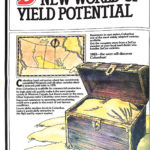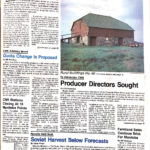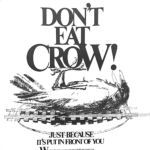Columbus wheat was available for wide distribution in 1983, with attributes including yield higher than Neepawa, rust resistance and improved resistance to sprouting. Proposed changes to the Crow freight rate dominated news that month, with delegates to the Canadian Federation of Agriculture annual meeting rejecting an acreage-based subsidy in favour of paying it to railways











